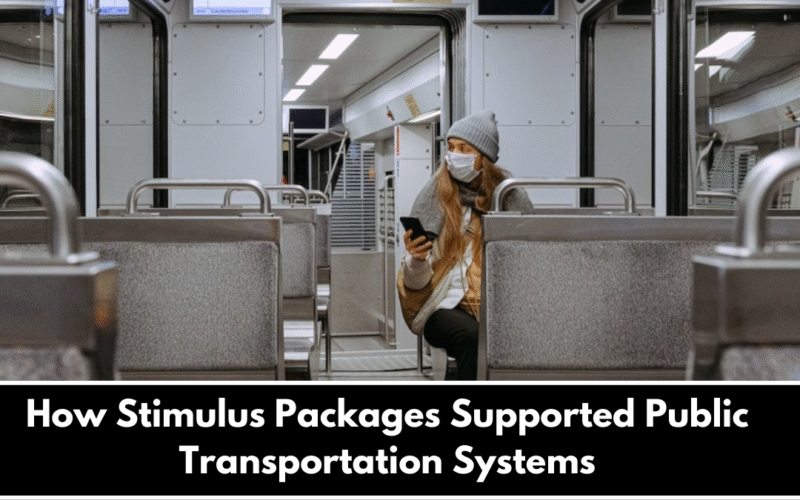Public transportation is the lifeline of cities, helping millions of people travel daily for work, education, and essential needs. During the COVID-19 pandemic, however, transit systems across the world faced a severe crisis. With fewer passengers, rising operating costs, and safety challenges, many transit agencies struggled to survive. To prevent collapse, governments introduced stimulus packages that provided emergency funding and relief. These measures not only kept buses, trains, and metros running but also ensured that frontline workers and essential services remained connected. Let’s explore how stimulus packages supported public transportation systems and why they were so critical.
Emergency Relief for Transit Agencies
One of the biggest challenges public transportation systems faced during the pandemic was a sudden loss of revenue. Passenger fares usually cover a significant portion of operating costs, but lockdowns and remote work reduced ridership dramatically. Many agencies reported revenue drops of more than 70%. Stimulus packages provided direct financial aid to cover these losses. In the U.S., for example, the CARES Act (2020) and subsequent relief bills allocated billions of dollars to keep transit systems operational. This funding helped agencies pay employee salaries, maintain vehicles, and cover day-to-day expenses. Without such aid, many transit systems would have faced layoffs, reduced service hours, or even complete shutdowns.
Beyond operational survival, the funds ensured that essential workers—such as healthcare staff, grocery employees, and delivery personnel—could still rely on buses and trains to get to their workplaces. This highlighted the role of public transit not just as a service, but as a public necessity.
Long-Term Investments and Modernization
While much of the stimulus funding went to immediate relief, some packages also focused on long-term improvements. Governments realized that the pandemic was an opportunity to modernize public transportation and make it more resilient for the future. Investments were made in clean energy buses, contactless payment systems, and improved sanitation measures. For example, some cities introduced electric buses and upgraded air filtration systems in trains to improve safety. Others used the funds to speed up digital ticketing platforms, reducing the need for physical contact between passengers and staff.
These forward-looking investments not only addressed pandemic-related concerns but also aligned with broader environmental goals. By supporting cleaner, more efficient transit systems, stimulus packages encouraged sustainable urban development. In the long run, these improvements could reduce pollution, lower traffic congestion, and make public transit more appealing to commuters.
Stimulus packages played a crucial role in saving public transportation systems from collapse during the pandemic. By providing emergency relief, they ensured that essential services remained operational, workers stayed employed, and communities stayed connected. At the same time, long-term investments helped modernize and strengthen transit networks, making them more sustainable for the future. Public transportation is more than just a way to travel—it is a backbone of society. The support from stimulus packages not only kept it alive during a crisis but also paved the way for a stronger, greener, and more resilient system ahead.
FAQ’s:
1. Why was public transportation hit so hard during the pandemic?
Public transportation depends heavily on passenger fares. With lockdowns and remote work reducing ridership by over 70% in some cities, transit systems lost a major source of income.
2. What role did stimulus packages play in supporting transit agencies?
Stimulus packages provided emergency funding to cover operational costs, salaries, and maintenance. This prevented service cuts and layoffs.
3. Did stimulus funding only cover short-term relief?
No. While most funding focused on immediate survival, some packages also supported long-term projects like electric buses, digital ticketing, and sanitation upgrades.
4. How did stimulus aid benefit essential workers?
4. How did stimulus aid benefit essential workers?
Essential workers like doctors, nurses, and delivery staff relied on buses and trains to reach workplaces. Stimulus aid ensured transit systems could keep running safely for them.
5. What is the long-term impact of stimulus funding on public transportation?
Beyond survival, the funding encouraged modernization and sustainability. This means cleaner, safer, and more efficient transportation systems for the future.
